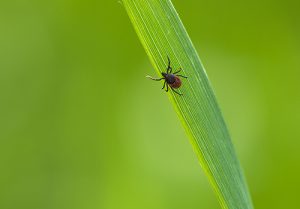
Image By lightpoet
Parasites in Your Blood?
Babesiosis is one diagnosis that will make anyone cringe. A condition caused by a parasite that infiltrates your red blood cells and wreaks havoc on the body? Hard pass. Unfortunately, every year, a couple of thousand people in the U.S. will have to deal with this.
Babesia: What Is It?
Babesiae are protozoan parasites that infect red blood cells. As they multiply, more and more red blood cells are destroyed, which can lead to potentially fatal health conditions—especially in the elderly, those with compromised immune systems, or those without a spleen.
Transmission
In humans, babesia transmission usually happens in one of three ways. They can be spread by deer ticks, through blood transfusions, or during pregnancy from mother to baby. Usually, they are transmitted via deer ticks. Now, most of us probably think of Lyme disease as being associated with ticks. The unfortunate truth is that babesiosis and Lyme disease can co-occur.
What to Look For
Relatively healthy individuals may not experience obvious symptoms, and so the presence of babesiae may go completely unnoticed. Others may experience severe symptoms. Symptoms of babesiosis can first appear anywhere from 1-9 weeks after exposure. The condition may present flu-like symptoms such as fever, headaches, fatigue, chills, and body aches. Additional symptoms may include shortness of breath, hemolytic anemia, and heart or renal failure.
Blood Banks
Babesiae tend to be endemic to certain areas, particularly the northeastern coast of the U.S. as well as the states of Wisconsin and Minnesota. We first became aware of the possibility of transmission through blood infusions back in 1979. However, it wasn’t until 2011 that the CDC opened a case surveillance system for states to report known cases. Blood banks ask screening questions to eliminate those who have had a confirmed case of certain blood conditions such as babesiosis. However, since many healthy individuals never experience symptoms or receive a diagnosis, some blood donors with babesiosis may unknowingly slip through. The FDA has made recommendations for certain high-risk states to perform blood testing in hopes of weeding out most of these cases. Until all blood banks can implement effective screening and testing measures, we will continue to see babesiosis cases resulting from transfusions.
Reduce Your Risk of Tick Bites
While the thought of getting infected with a babesia from a blood transfusion is disturbing, you are much more likely to acquire it through a tick bite. However, there are a few measures that you can take to help protect yourself from being bitten by a babesiae-carrying tick. Take a look at the following precautionary list:
- Wear long sleeves, pants, and boots if you are entering into wooded or bushy areas.
- Apply repellants to your skin and clothing.
- Wear light-colored clothing to help you see if a tick is catching a ride on your garments.
- Tuck your pants into your socks and/or shoes to help protect your ankles from exposure.
- Shower and inspect your skin thoroughly. Younger deer ticks can be as small as a poppyseed, so you’ll want to be very thorough about this.
- If you do spot a tick, remove it promptly and clean the affected area. The longer the tick stays on, the higher the chance that it will transmit disease.
Take precautions when you can. If you think you may have been bitten by a tick, make sure to report it to your doctor.
Have Health Insurance Questions?
We hope that this information on babesia is helpful for you.
Insurance is oftentimes overwhelming and we want to shed light on the industry by answering your questions. Comment below and your question may be the topic of our next post!
If you liked this article, share it with your friends!
Empower Brokerage wants to help you find the insurance coverage you need and how to save money getting it. Stay on top of your health and give us a call at (844) 410-1320.
Get affordable health insurance quotes by clicking here.
See our other websites:

